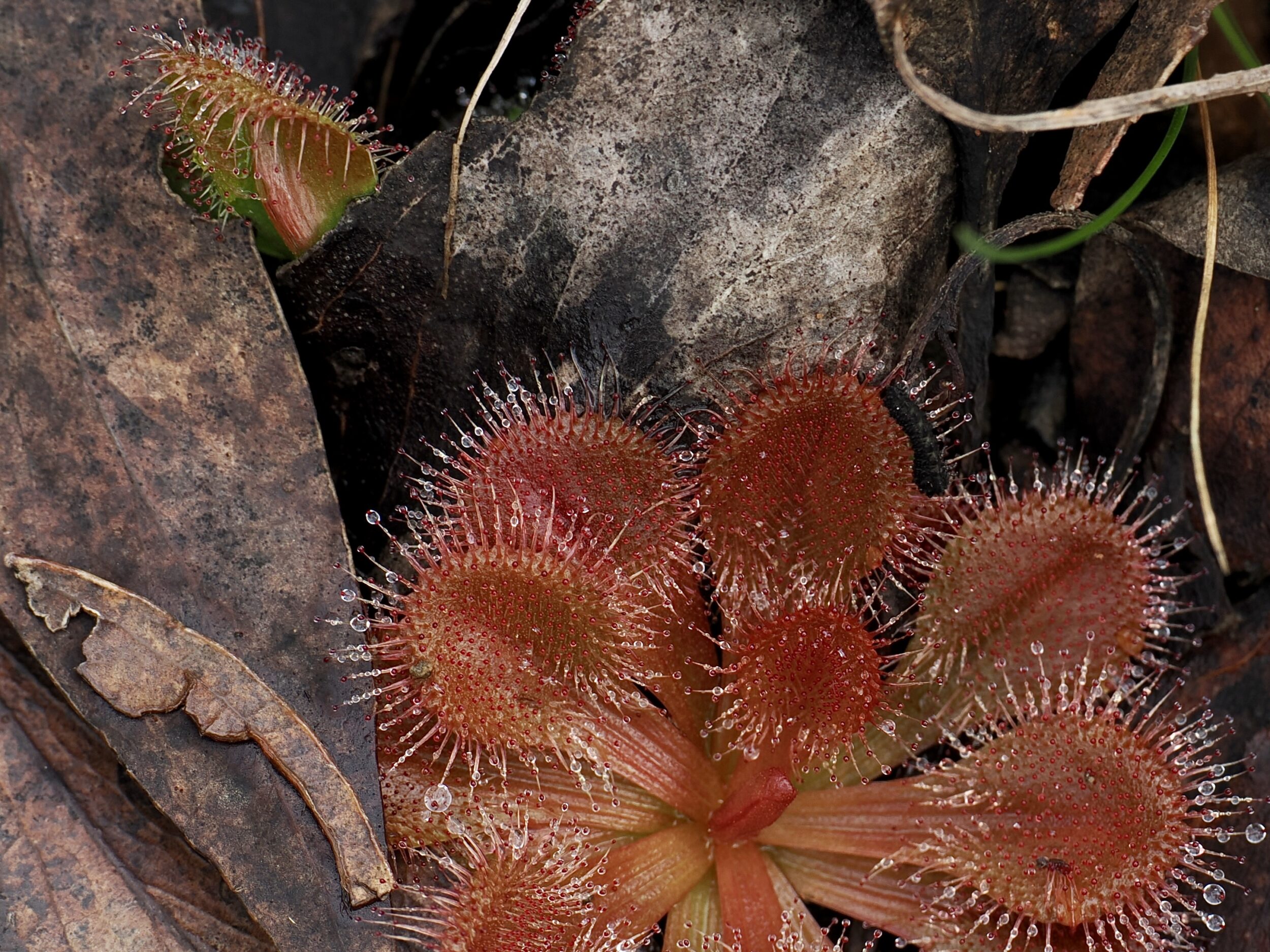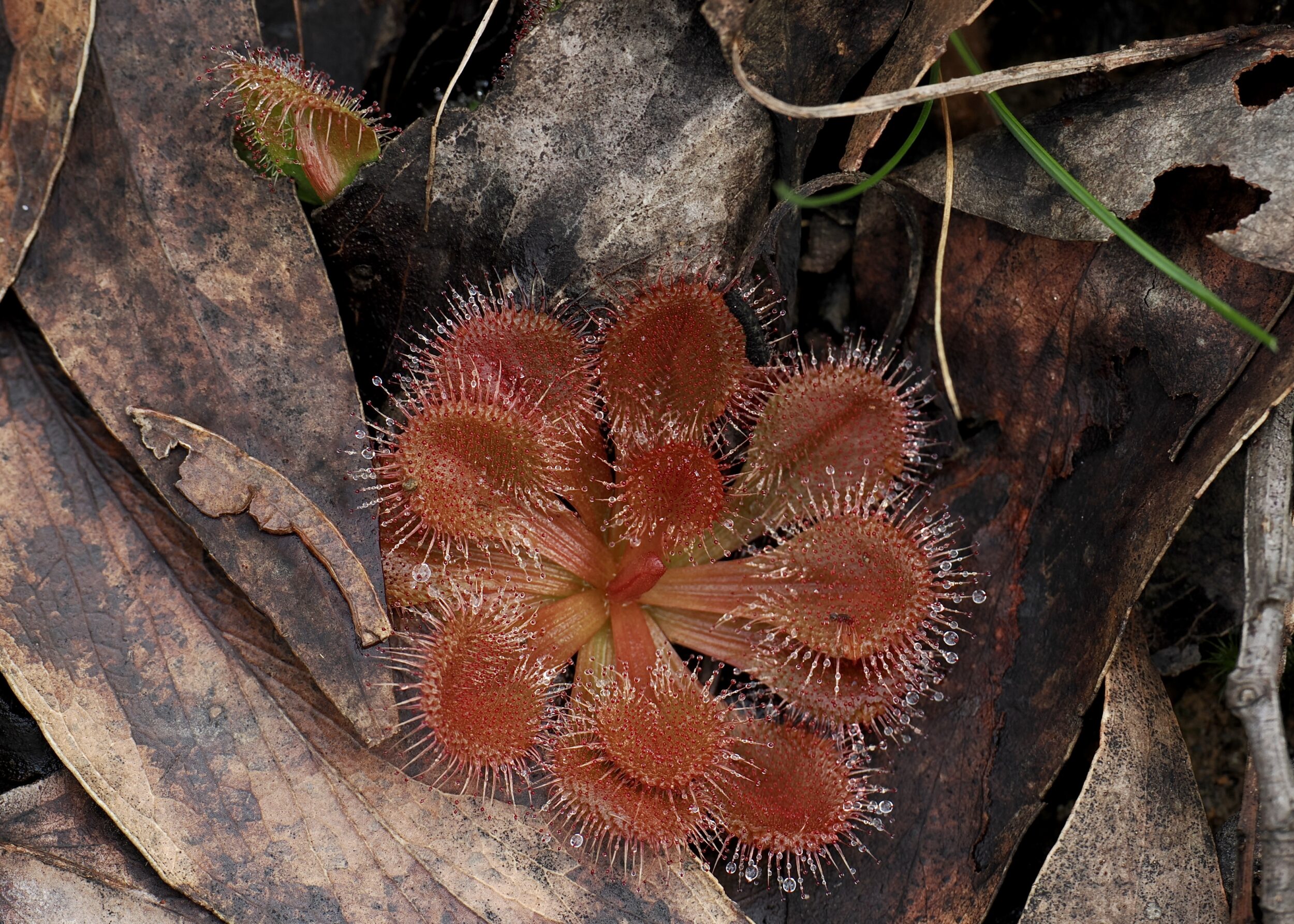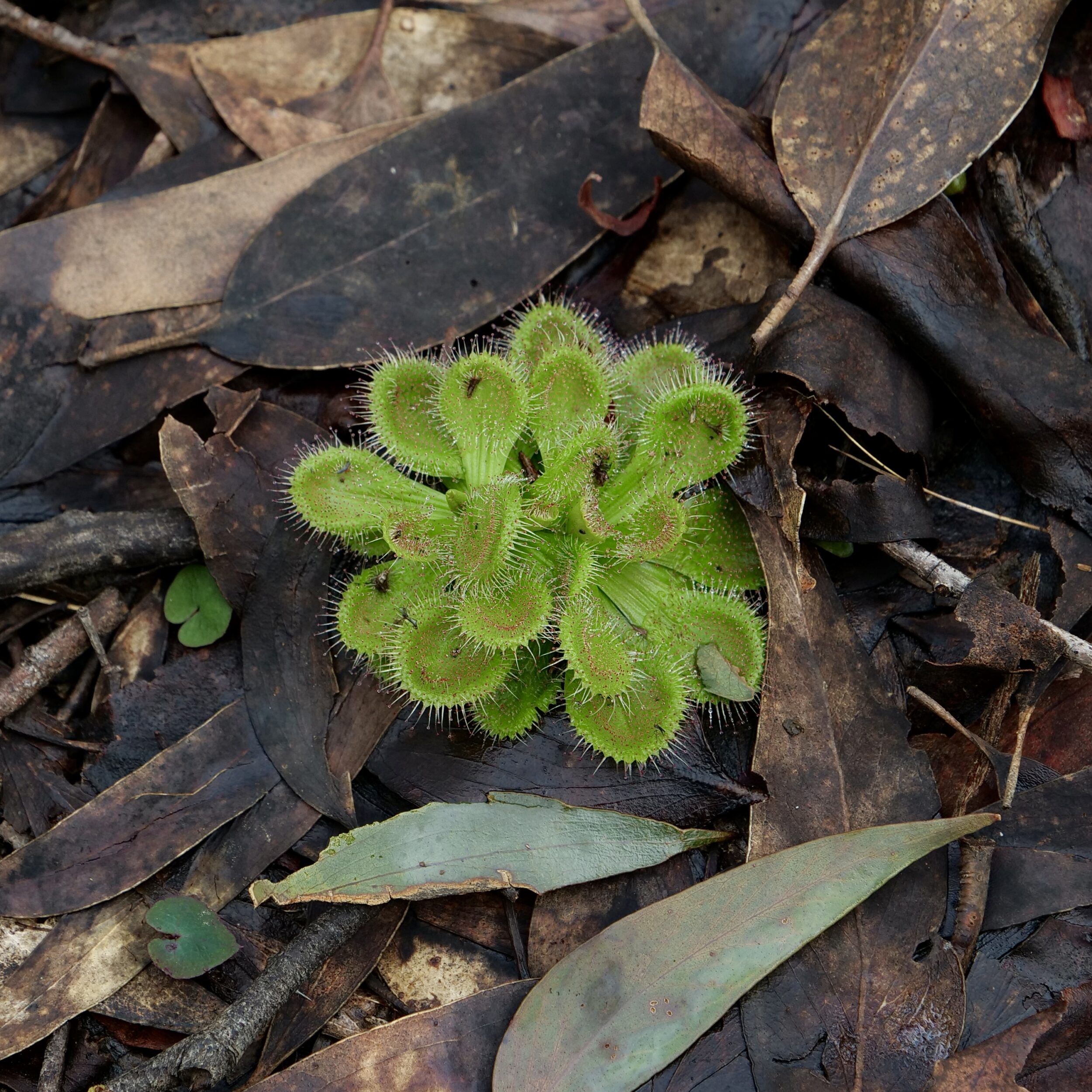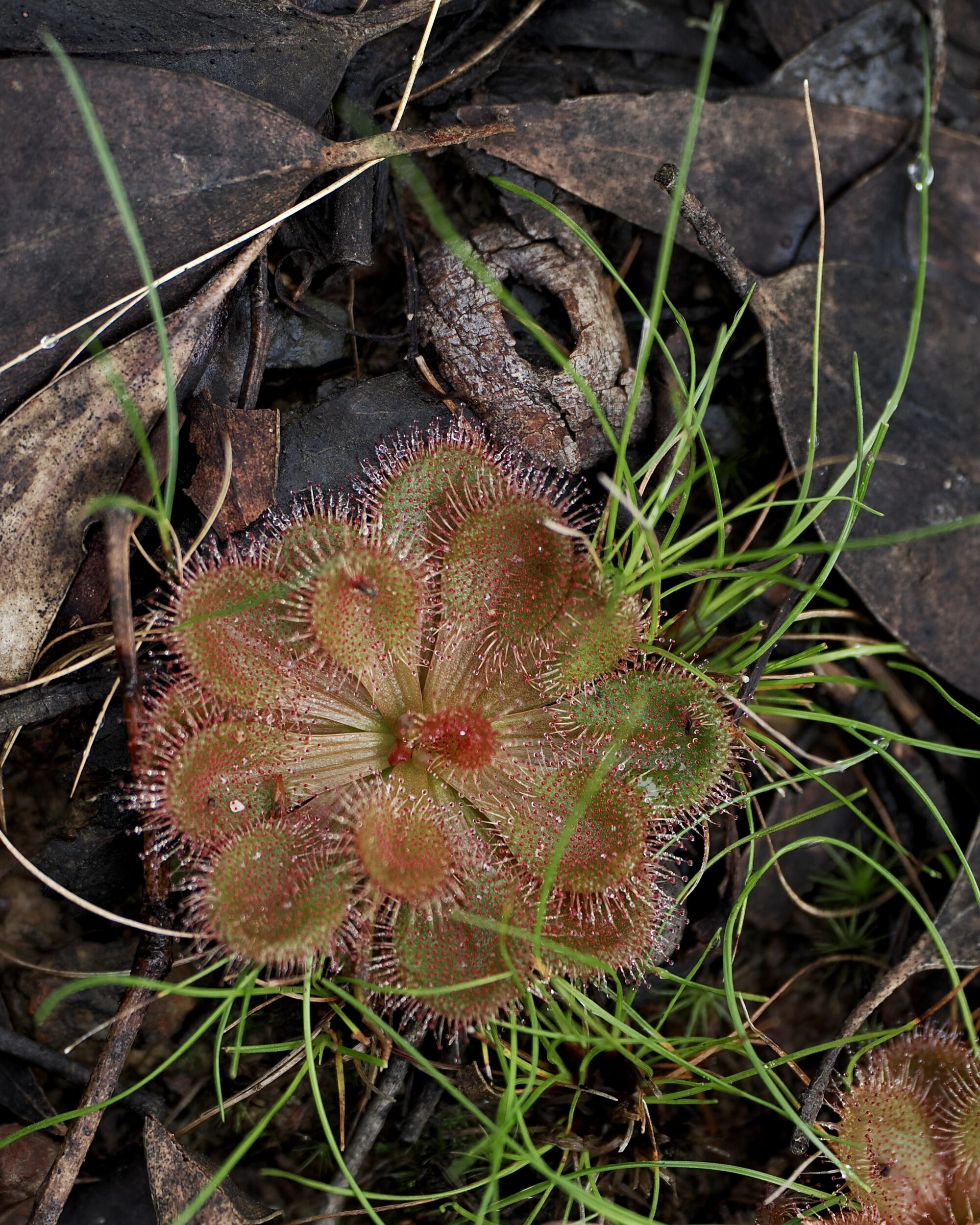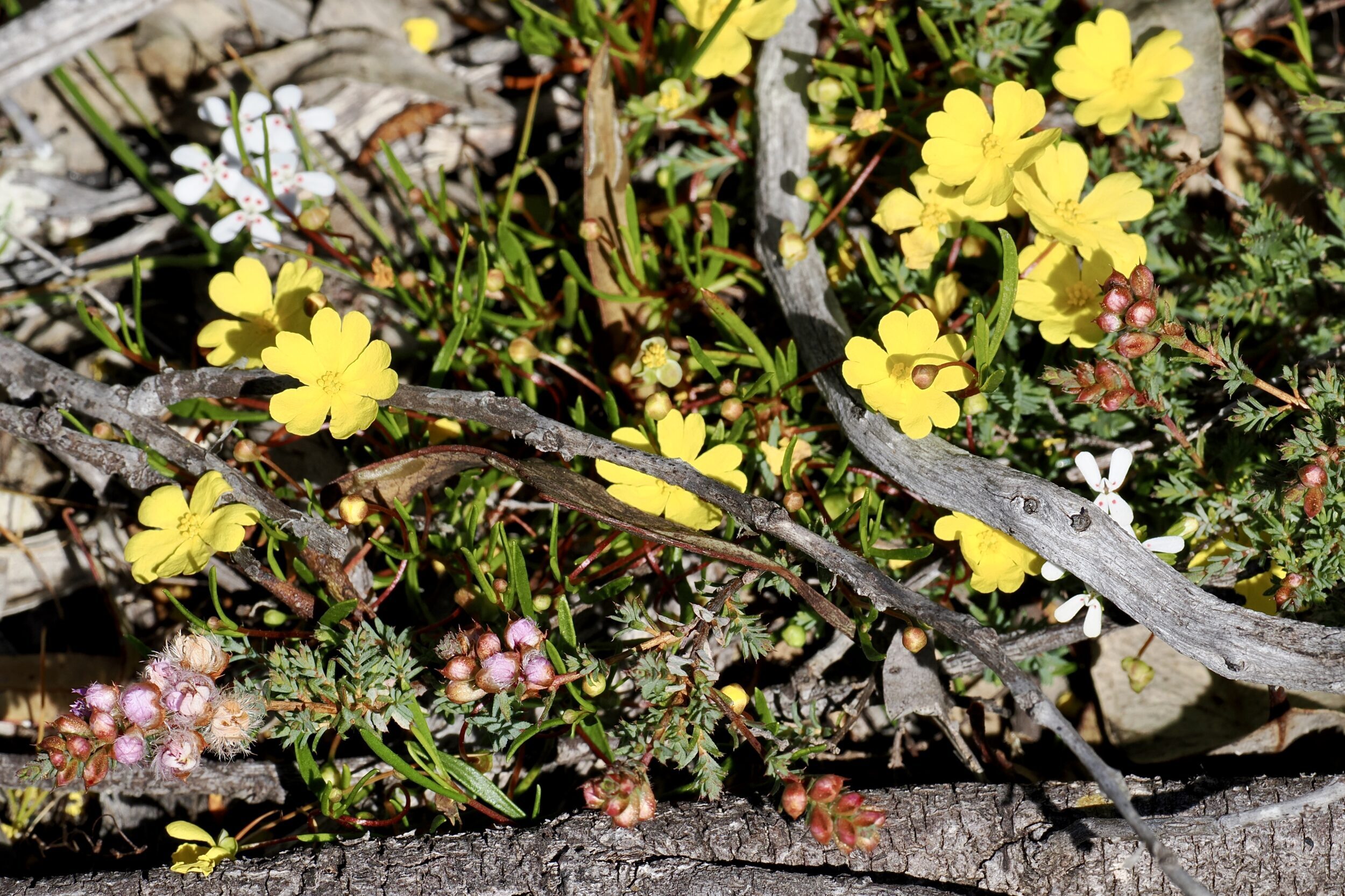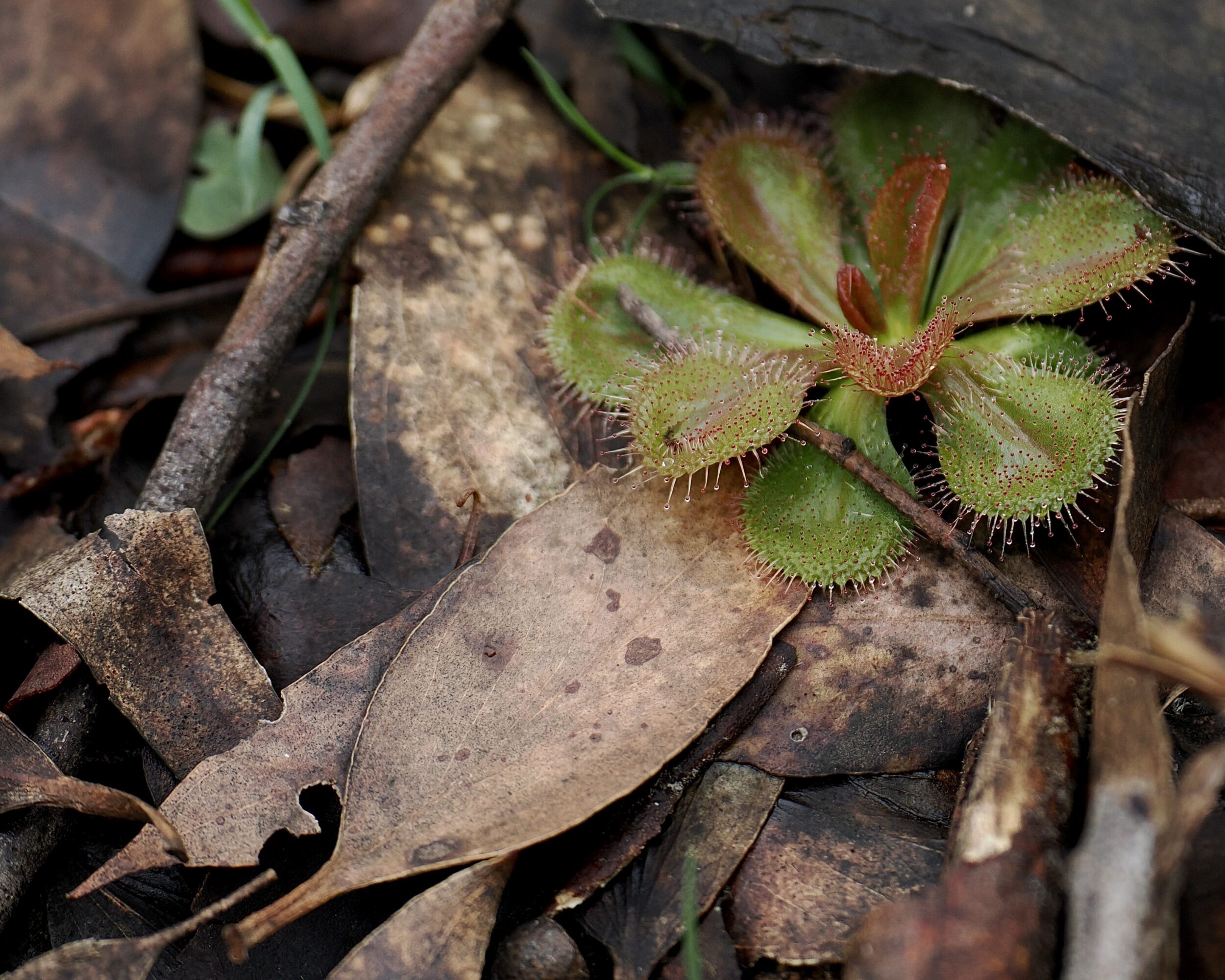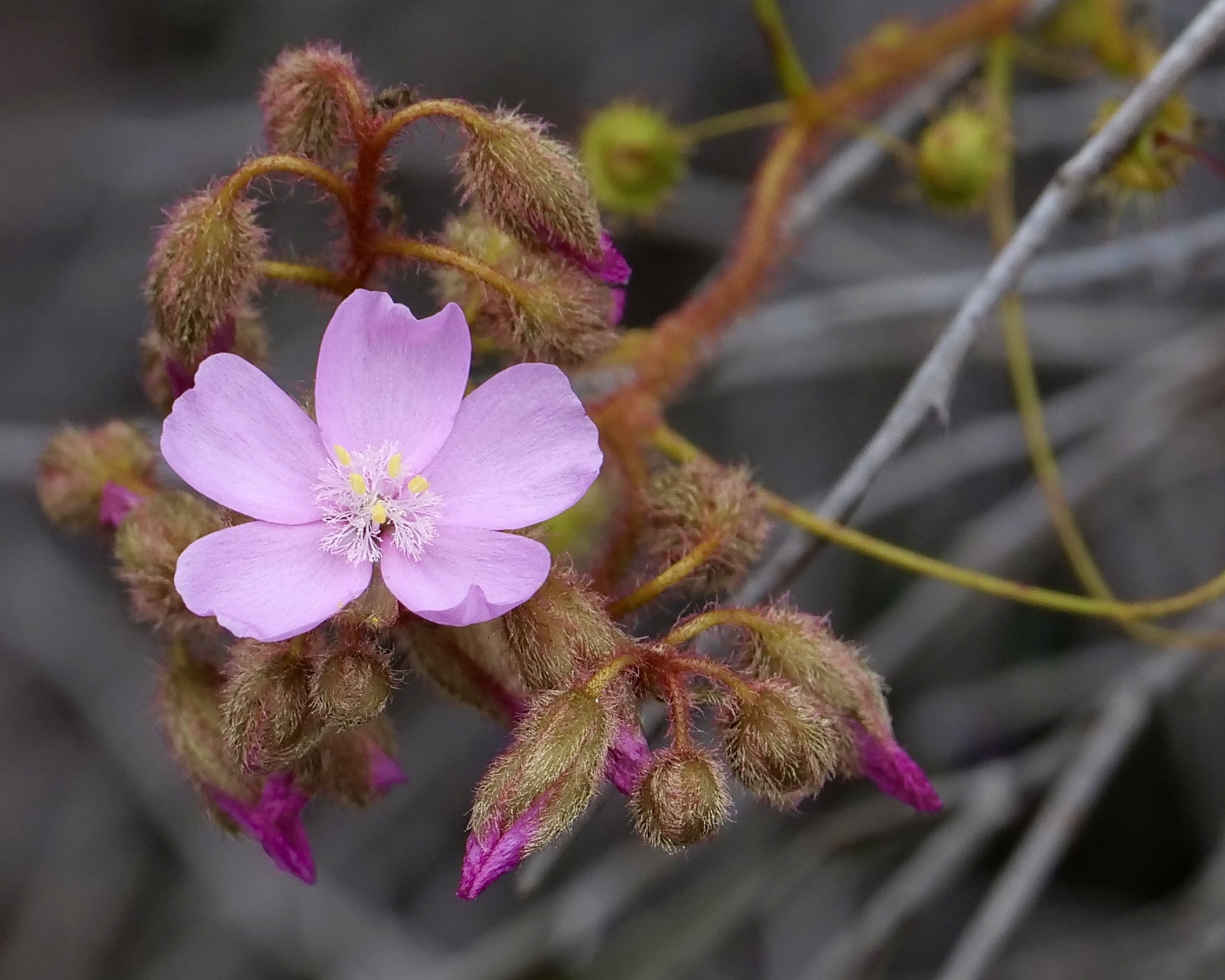This post’s images are cropped versions of the very same photos that appeared in the immediately preceding post.
The closer the view, the more readily-evident is the fact that these plants are predators.
Above and below, you have a good view of their “dew” (which is not dew) and of some of the lured victims in the “killing field”, in various stages of being “dissolved”/ “absorbed”/ devoured.
Comments closed